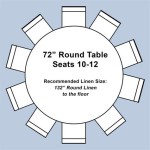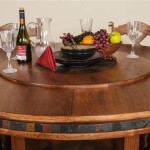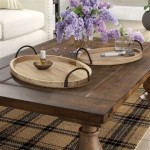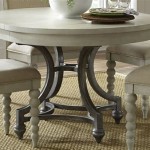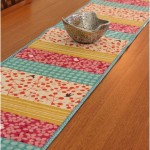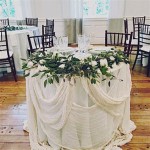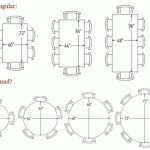How To Choose the Perfect Round White Tablecloth
Selecting the right tablecloth is essential for setting the desired ambiance, whether for a formal banquet, a casual dinner party, or everyday use. A round white tablecloth, in particular, offers a versatile foundation that can be adapted to various occasions and décor styles. However, with a wide array of options available, making the optimal choice requires careful consideration of several key factors.
This article provides a comprehensive guide to navigating the selection process, focusing on critical elements such as size, fabric, durability, care requirements, and aesthetic considerations. By understanding these aspects, individuals can confidently choose a round white tablecloth that perfectly complements their table and enhances the overall dining experience.
Understanding Tablecloth Size and Shape
Accurate measurement is the first and most crucial step in selecting a round white tablecloth. The goal is to determine the ideal size to achieve the desired drape, also known as the “drop.” The drop refers to the amount of fabric that hangs over the edge of the table. A standard drop typically ranges from 8 to 12 inches, providing an elegant and balanced look. However, for formal events, a longer drop, extending almost to the floor, may be preferred for a more dramatic effect.
To determine the appropriate tablecloth diameter, measure the diameter of the round table. Then, calculate the desired drop on each side (e.g., 10 inches). Multiply the drop by two (to account for both sides) and add this figure to the table diameter. The resulting number represents the ideal diameter of the tablecloth.
For instance, if a round table has a diameter of 48 inches and a 10-inch drop is desired, the calculation would be as follows: 10 inches x 2 = 20 inches; 48 inches (table diameter) + 20 inches (total drop) = 68 inches. Therefore, a 68-inch round tablecloth would be the appropriate size.
It is generally advisable to err on the side of a slightly larger tablecloth rather than one that is too small. A tablecloth that is too short will appear disproportionate and detract from the overall aesthetic. Conversely, a slightly longer tablecloth can be subtly adjusted for a more polished appearance.
Consider the intended use of the table when determining the desired drop. For example, a table used for buffets or serving stations may benefit from a longer drop to conceal storage underneath. In contrast, a shorter drop may be more practical for everyday dining tables to prevent the tablecloth from becoming a tripping hazard.
Choosing the Right Fabric
The fabric of a round white tablecloth significantly impacts its appearance, durability, and maintenance requirements. A variety of materials are available, each with its own unique characteristics and suitability for different occasions. Common choices include linen, cotton, polyester, and various blends.
Linen is highly regarded for its luxurious texture and elegant drape. It is a natural fiber known for its breathability and ability to become softer with each wash. Linen tablecloths are often associated with formal events and upscale dining experiences. However, linen is prone to wrinkling and requires careful ironing to maintain a pristine appearance. It can also be more expensive than other options.
Cotton is another natural fiber that is valued for its softness, absorbency, and versatility. Cotton tablecloths are typically less expensive than linen and are easier to care for. They can be machine washed and dried, although they may still require some ironing to prevent wrinkles. Cotton is a suitable choice for both casual and semi-formal settings.
Polyester is a synthetic fabric that is known for its durability, wrinkle resistance, and stain resistance. Polyester tablecloths are a practical choice for frequent use and events where spills are likely to occur. They are also relatively inexpensive and easy to care for. However, polyester may not have the same luxurious feel as linen or cotton.
Blends, such as cotton-polyester blends, offer a compromise between the benefits of natural and synthetic fibers. These blends provide a balance of softness, durability, and wrinkle resistance. They are a popular choice for everyday use and events where both practicality and aesthetics are important.
The weight of the fabric is another important consideration. A heavier fabric will generally drape better and feel more luxurious than a lighter fabric. However, a heavier fabric may also be more difficult to wash and dry. Consider the overall weight and feel of the tablecloth when making a decision.
The weave of the fabric also contributes to its texture and appearance. Different weaves, such as damask, jacquard, or plain weave, create different patterns and textures. Damask and jacquard weaves are often used for formal tablecloths, while a plain weave is more common for casual tablecloths.
Considering Durability and Care Requirements
The durability and care requirements of a round white tablecloth are important factors to consider, especially for tablecloths that will be used frequently. The chosen fabric and construction methods will significantly impact the tablecloth's ability to withstand repeated use and washing.
Reinforced edges and seams are essential for preventing fraying and tearing. Look for tablecloths with tightly stitched hems and durable overlock stitching. These details will help ensure that the tablecloth remains in good condition even after multiple washes.
Stain resistance is another key consideration, particularly for tablecloths that will be used for dining. Some fabrics, such as polyester and certain treated cotton blends, are naturally more stain resistant than others. Consider purchasing a stain-resistant finish or treatment to protect the tablecloth from spills and stains.
The washing instructions for the tablecloth should be carefully reviewed before purchase. Some fabrics, such as linen, may require special care, such as hand washing or dry cleaning. Other fabrics, such as polyester, can be machine washed and dried. Choose a fabric that is compatible with the available laundry facilities and the desired level of maintenance.
Consider the colorfastness of the white tablecloth. Repeated washing can cause some fabrics to fade or yellow over time. Look for tablecloths that are made with high-quality dyes and fabrics that are known for their colorfastness. Follow the washing instructions carefully to minimize fading and maintain the brightness of the white color.
The longevity of the tablecloth is directly related to its quality and care. Investing in a well-made tablecloth from a reputable brand can often result in a longer lifespan and better overall value. Following the manufacturer's instructions for washing, drying, and ironing will also help to extend the life of the tablecloth.
Aesthetic Considerations: Style and Occasion
Beyond practical considerations, the aesthetic appeal of a round white tablecloth is paramount. The chosen design should complement the table setting, the décor of the room, and the overall ambiance of the occasion. A white tablecloth provides a neutral canvas that can be easily adapted to various styles, from classic and formal to modern and casual.
For formal occasions, such as weddings or banquets, a crisp white linen or damask tablecloth can create an elegant and sophisticated atmosphere. Pair it with fine china, silverware, and crystal glassware to complete the look. A longer drop, extending almost to the floor, can further enhance the formality of the setting.
For semi-formal occasions, such as dinner parties or holiday gatherings, a white cotton or cotton-polyester blend tablecloth can provide a more relaxed yet refined feel. Choose a tablecloth with a subtle texture or pattern to add visual interest. Pair it with decorative placemats, napkins, and centerpieces to create a festive and inviting ambiance.
For casual occasions, such as everyday dining or picnics, a simple white polyester or cotton tablecloth can be a practical and stylish choice. Opt for a shorter drop and pair it with colorful tableware and casual accessories. A white tablecloth can also serve as a backdrop for vibrant patterns and prints, allowing the tableware to take center stage.
Consider the overall color scheme of the room or event when selecting a white tablecloth. White is a versatile color that can be easily paired with a wide range of colors and patterns. However, it is important to ensure that the white tablecloth complements the other elements of the décor, such as the wall color, furniture, and lighting.
The texture of the tablecloth can also contribute to the overall aesthetic. A smooth, crisp tablecloth can create a formal and polished look, while a textured tablecloth can add visual interest and depth. Experiment with different textures to find a tablecloth that suits the desired style and ambiance.
Finally, consider the lighting in the room or event space. White tablecloths can reflect light and create a bright and airy atmosphere. However, they can also be susceptible to glare in direct sunlight. Adjust the lighting accordingly to avoid glare and create a comfortable and inviting environment.

White 120 Inch Round Tablecloth Wedding Decorations Party Table Cover

Tablecloth Size Chart Asap Linen

How To Choose The Right Tablecloth For A Round Table

6 Pack Round Tablecloths 108 Inch White Polyester Table Cover For Stain And Wrinkle Resistant Washable Fabric Cloth Tablecloth Wedding Banquet Parties Com

How To Choose The Right Tablecloth

1pc White Round Tablecloth 60 Inches Suit For Circular Table Stain Resistant Wrinkle Polyester Cloth Perfect Gatherings Weddings Banquets Dining Etc Shein

82 Table Cloth White Round Covers

Pesonlook 16 Pieces Burgundy Tablecloth Satin Table Runner Set 12x108 Inch Runners 84 Plastic Cover Round Cloths For Party Decorations Wedding Birthday Celebration Com

Round Tablecloths For Weddings Find Your Perfect Fit

Polyester 120 Round Tablecloth Light Ivory Off White Table Cloth
Related Posts

